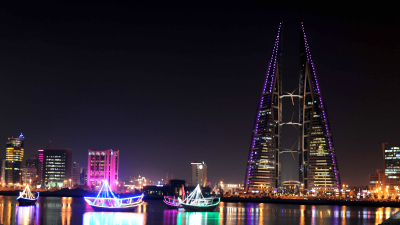The journey from Dilmun to the British
Bahrain declared nationhood in 1971, shedding the yoke of colonial rule-first by the Portuguese and then by the British. Before all that. Bahrain- along with Kuwait and Saudi Arabia-was the centre for the Dilmun civilization, a contemporary of the Indus Valley Civilization.
Bahrain established itself as a monarchy in 1971, following independence. Sheikh Isa ibn Salman Al Khalifah was the first Emir (ruler or commander) of the country. In 1999, Sheikh Hamad ibn Isa Al Khalifah became the Emir. In 2002, he led the country’s transition into a constitutional monarchy
In 2011, during the Arab Spring, Bahrain also witnessed a public uprising. The uprising called for more political freedom and an end to the monarchy. But it was crushed through military intervention, with support from Saudi Arabia and the United Arab Emirates. The country enjoys the status of being a non-NATO US. ally.
A nation that turned adversity into advantage
Located in the Persian Gulf. Bahrain is an archipelago comprising 33 islands. Its name comes from the Arabic al-Bahrayn meaning two seas. It refers to the two sources of water in the country – the freshwater springs and the surrounding seas. The springs played an important role in the development of pearl oysters.
Over 90% of Bahrain is desert. The freshwater springs, which once provided drinking water for the country, stopped flowing in the 1980s. The country has very little arable land. Interestingly, the country also has little oil wealth. Despite all of these adversities, the tiny island nation managed to develop into a major economy.
Bahrain is among the five most water-stressed countries in the world. To overcome shortage, the country invested in desalination technology in the early 1980s, when it was still in its nascent stages. Close to 60% of the country’s drinking water needs are met by desalination plants.
As most of the desert land is uncultivable, the country forged trade ties with several nations, including India. Today, 90% of food consumed in Bahrain is imported. It has also taken advantage of the sea to become a major fishing hub.
Popular spots
Al Fateh is the grand mosque in Bahrain that is capable of accommodating 7000 people, and is one of the largest mosques in the world. It was built in 1988, with marble, glass, and teak wood. The dome of the mosque is made of fibreglass so that devotees can see all the heavenly glory from there. Bab-Al-Bahrain is one of the most beautiful markets in Manama having several stalls selling veggies and fruits, clothes, and crafts, and gold and pearls. Opened in 1949, the historical building is designed by the British advisor to the emir, Charles Belgrave.
The economic boom
Bahrain is among the top 20 richest countries in the world. Currently, the Bahraini Dinar is the second-highest-valued currency unit in the world. One Bahraini Dinar is worth over 220 Indian Rupees. But that tag did not come easily.
The country did not have oil reserves, but the country took up contracts for oil processing and refining from its neighbours, which provided a big business boost. It soon diversified into other areas as well – the biggest being banking and financial sectors. Bahrain’s capital Manama is one of the fastest growing financial centres in the world.
Another backbone of the country’s economy, for centuries, is the pearl industry. Bahrain is the first country in the world to ban cultured or artificial pearls. This has been a big boost for its pure pearl market. It is believed that the nutrients carried by Bahrain’s springs into the sea gave its pearl oysters a unique environment to produce high quality gems.
The pearls are prised from seabed oysters by divers. It is said that making a single string pearl necklace could take up to five years as the pearls have to be sourced from divers in batches. A larger necklace could take even 10 years to make and would cost around *20 lakh.
There are about 3,50,000 Indian nationals in Bahrain, making them the largest expatriate group in the country. Immigration of Indians to Bahrain started right from the time of Dilmun civilization and continued through the British period. While early immigrants were traders, the current generation of Indians in Bahrain work as doctors, engineers, chartered accountants, bankers, managers, and other professionals.
PIcture Credit : Google

Leave a Reply